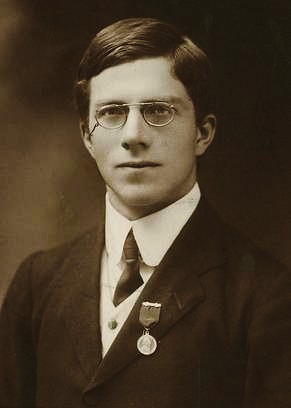Hypergeometric Injustice: The Dangerous Math Behind Government AI-Driven Prosecutions
In an era where artificial intelligence algorithms increasingly dictate outcomes in courts, hospitals, and boardrooms, one courtroom drama in Benjamin Franklin’s City of Brotherly Love, stood as a striking counterexample to blind faith in government artificial intelligence. United States v. Anand wasn’t just a Philadelphia legal battle, it was a war of ideas, where century-old statistical theory was pitted against the sleek certainty of United States Department of Justice’s Artificial Intelligence. At the center of the storm I, Dr. Neil Anand, was a physician accused of overbilling federal insurers. In college, I trained in metaphysics and meta-mathematics and so I hired, Dr. Wayne L. Winston, a mathematical genius, to resurrect probability distribution statistics to attempt to tip the scales of justice in my favor. Dr. Wayne Winston, Professor Emeritus at Indiana University’s Kelley School of Business, holds degrees from MIT and Yale and has advised everyone from NBA teams to the Department of Defense. Though long retired from academia, Dr. Winston was drawn back to the fray when I asked him to consult on my criminal defense. The prosecution’s case hinged on an opaque, AI-powered audit that flagged my billing patterns as anomalous and an outlier, and therefore, fraudulent. But according to Dr. Winston, the math didn’t add up. Dr. Winston’s mathematical report didn’t just try to attempt to correct the U.S. Government’s artificial intelligence model, it tried to expose its artificial stupidity. The U.S. Government’s AI was using flawed assumptions. It ignored the human variables that make real-world data messy and complex. To counter the government’s probabilistic assertions, Dr. Winston reached deep into the toolbox of statistics and pulled out the hypergeometric distribution, a model introduced nearly a century ago by Sir Ronald A. Fisher, the British polymath widely regarded as the father of modern statistics. Unlike the binomial distribution, which assumes independent trials with replacement, the hypergeometric distribution is tailored for finite scenarios, like drawing cards from a deck or auditing a fixed number of transactions. Sir Fisher’s refinement of this model, the noncentral hypergeometric distribution, introduces weighted probabilities, allowing for human differences in categories or conditions. This biological statistical nuance was critical. The government’s AI model treated all medical prescriptions and patients as homogenous data points, disregarding comorbidities, care settings, and individual human variation. By applying Fisher’s weighted model, Dr. Winston attempted to show that my billing patterns were not only statistically plausible but fully consistent with legitimate medical practice. “When you let machines prosecute without understanding the distributions, you don’t get justice, you get automated superstition.”-YWTN
David vs. U.S. Government Data Artificial Intelligence Goliath
In the City of Benjamin Franklin, I stood virtually alone against a Government technological leviathan. The U.S. government had deployed artificial intelligence to trawl through years of my medical records, using artificial intelligence statistical models to paint my treatment of chronic pain patients as a criminal enterprise. Statistical outliers were treated as patterns, human context was erased, and complexity reduced to binary conclusions. With a small legal team led by my attorney, Coley Reynolds, and the backing of patient and human rights advocacy groups, I pushed back. My criminal defense wasn’t just about numbers, it was about narrative, about showing that algorithmic artificial intelligence interpretation could never replace human judgment. American United International, Chairwoman Belinda Parker Brown argued on my behalf on civil rights grounds stating that, “Dr. Anand is David facing a government Goliath armed with artificial intelligence. In Franklin’s city, we’re fighting to show that truth and humanity can triumph over cold artificial intelligence algorithms. This unprecedented struggle pits one man’s dedication against a system stacked against him, setting the stage for a landmark verdict on whether technology will serve justice or bury it.”
How Fisherian Logic Was Utilized To Undermine Federal AI Predictive Models
Dr. Winston is no stranger to statistical combat. He has written best-selling books on Excel analytics, taught billionaire Mark Cuban, and consulted for corporations like Microsoft, Cisco, and Deloitte. He is also a two-time Jeopardy! champion and co-creator of the analytics-based game Hoops with statistician Jeff Sagarin. Yet it was my high-stakes legal case that called on his deepest convictions about the power of math to serve justice. To understand Dr. Winston’s strategy, we must go back to Sir Ronald Fisher, one of the greatest statisticians of the 20th century. Sir Fisher revolutionized statistics with concepts like inverse probability, maximum likelihood estimation, ANOVA, and experimental design, but one of his lesser-known contributions was the noncentral hypergeometric distribution, a refined version of the classic hypergeometric distribution. The hypergeometric distribution calculates probabilities in scenarios like drawing colored balls from an urn without replacement. Fisher’s version introduced weighted probabilities, making it invaluable in genetics and rare-event modeling. As governments increasingly rely on AI for law enforcement, Dr. Winston’s defense serves as a warning: “If you don’t understand the math behind your AI, you don’t understand your case.” The hypergeometric distribution, once a niche tool for geneticists, became the unlikely hero in the fight against Government algorithmic AI overreach, proving that sometimes, the best weapon against cutting-edge AI tech is a deep understanding of the mathematical past. Sir Fisher once said that “the best way to understand statistics is to do statistics.” Dr. Wayne Winston did just that, and in doing so, showed that sometimes the most powerful tools against high-tech Government overreach come not from Silicon Valley, but from the dusty annals of statistical theory.
The AI Battlefield and Beyond: U.S. v. Anand From P-Values to Prosecutorial Power on the Witness Stand
As Government AI systems increasingly drive decisions in law enforcement, healthcare, and finance, my case is a harbinger. It reminds us that transparency, accountability, and human oversight must accompany our embrace of technology. Blind trust in black-box AI models not only risks miscarriages of justice, it undermines the very principles that justice is built on. My trial may yet prove a turning point, not just for one man, but for the role of artificial intelligence in American law. Thanks to Dr. Winston, and the mathematical legacy of Sir Ronald Fisher, a courtroom in Benjamin Franklin’s Metropolis was reminded that justice is not just about facts and figures. It is about interpretation, intent, and the courage to ask whether the Government’s AI machine got it right. Because in the end, it may not be artificial intelligence that saves us but real human intelligence that is both statistical and humane.
Post Script: Interesting Information
Hypergeomtric Distribution
About Dr. Wayne Winston Dr. Wayne Winston has worked for Microsoft Corporation, Cisco Systems, 3M Company, Deloitte, the Dallas Mavericks, the US Department of Defense and the US Army. He is a Professor Emeritus of Decision and Information Systems at the Kelley School and a visiting professor at the University of Houston. Winston’s books include Marketing Analytics: Data-Driven Techniques with Microsoft Excel, Business Analytics: Data Analysis & Decision Making with S. Christian Albright, and Microsoft Excel 2016 Data Analysis and Business Modeling, Fifth Edition. His papers include “Optimal Price Skimming by a Monopolist Facing Rational Consumers” published on Management Science, and “Optimality of the shortest line discipline” published by Cambridge University Press. He also created the computer game Hoops with Jeff Sagarin. Also Two-time winner on the Jeopardy game show, 1992. https://youtu.be/U9HIU71VZNo?si=66nt0WT4rWl2NHEC
About Sir Ronald Aylmer Fisher FRS Sir Ronald Aylmer Fisher was a British polymath who was active as a mathematician, statistician, biologist, geneticist, and academic. For his work in statistics, he has been described as “a genius who almost single-handedly created the foundations for modern statistical science” and “the single most important figure in 20th century statistics”. In genetics, Fisher was the one to most comprehensively combine the ideas of Gregor Mendel and Charles Darwin, as his work used mathematics to combine Mendelian genetics and natural selection which contributed to the revival of Darwinism in the early 20th-century revision of the theory of evolution known as the modern synthesis. For his contributions to biology, Richard Dawkins declared Fisher to be the greatest of Darwin’s successors.
The Author received an honorable discharge from the U.S. Navy where he utilized regional anesthesia and pain management to treat soldiers injured in combat at Walter Reed Hospital. The Author is passionate about medical research and biotechnological innovation in the fields of 3D printing, tissue engineering and regenerative medicine.


I am truly sorry about the verdict. I see this as a loss for pain patients. I have consulted in malpractice cases and realize the prosecution only wants to win. To me more binary approaches may have helped you. Did the card meet the standard of care and practice. Yes/no. And a brief why. I hope you have a successful appeal.